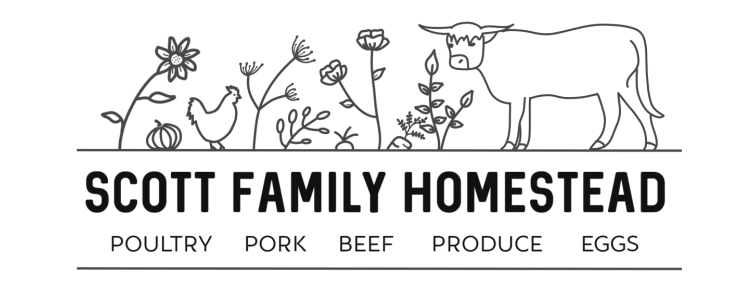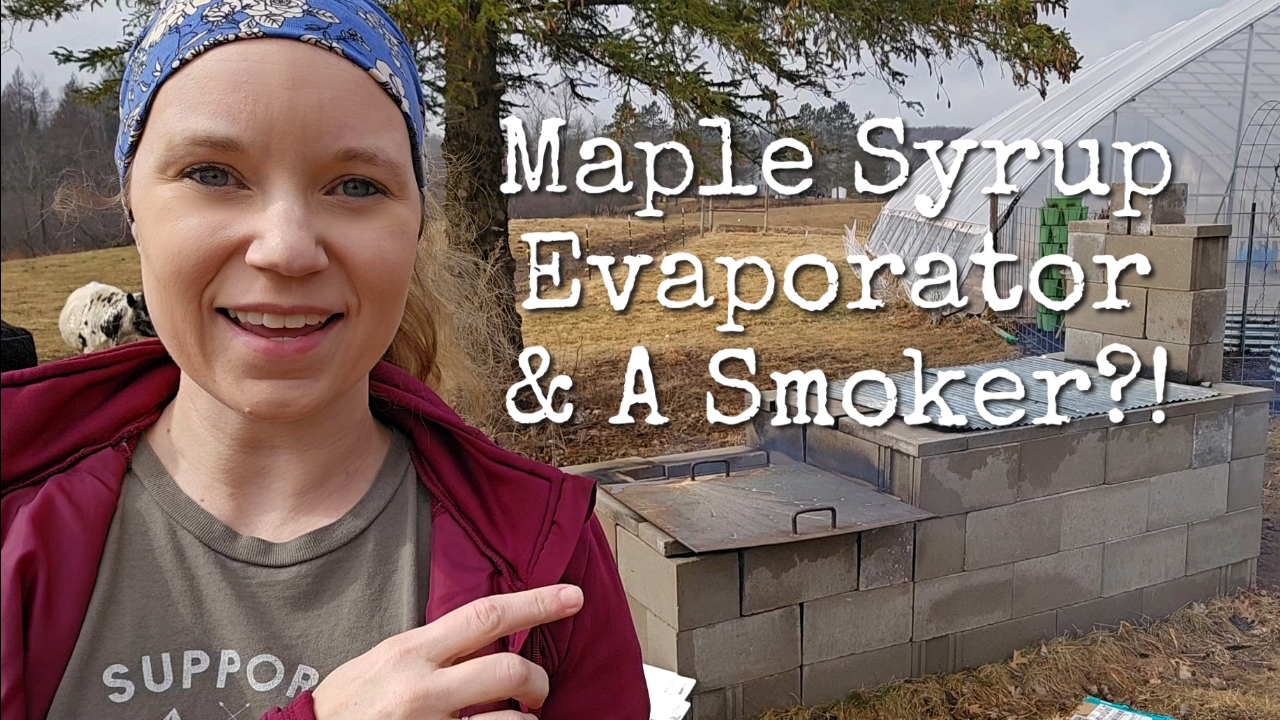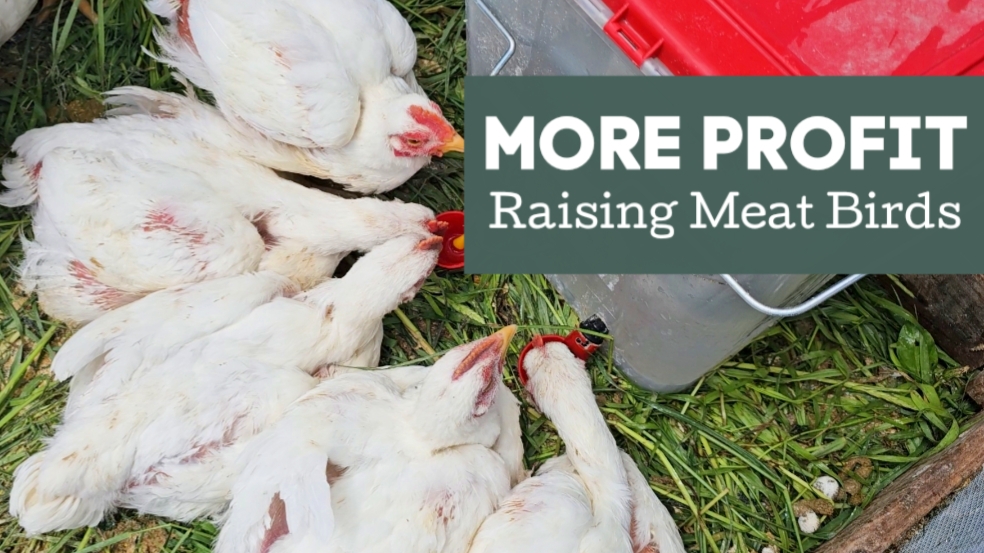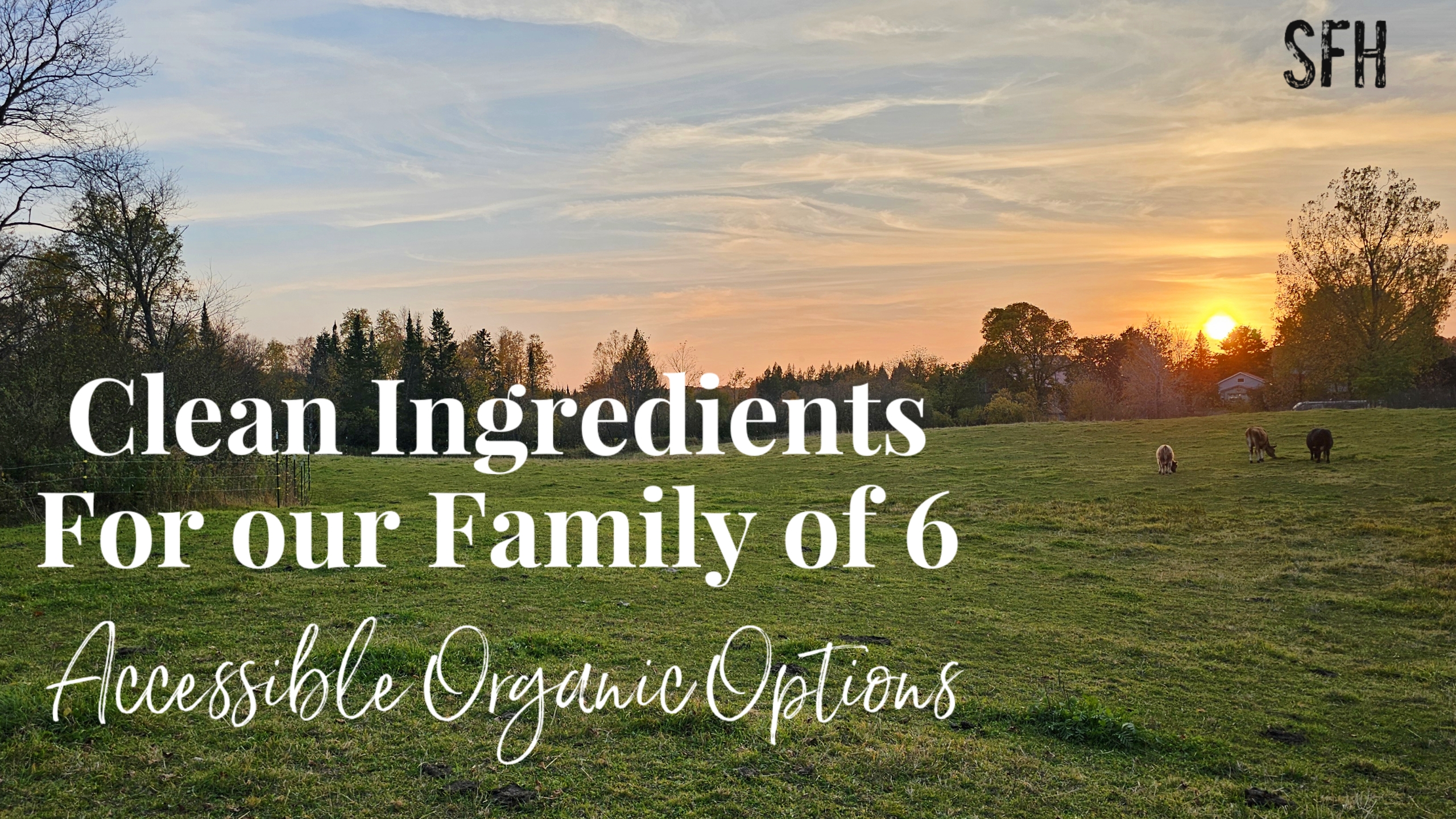This post includes affiliate links. I may receive a small commission if you purchase from my links, at no extra cost to you. Thank you for supporting our family!
It’s hard to believe you can raise meat chickens and fill your freezer in just 8 weeks. In just a weeks time after bringing these fluff balls home, you will see cornish cross chickens are built different. Bred to rapidly put on weight on a high protein diet, these birds make an excellent roaster. That breeding does have its consequences though, and these birds do have some drawbacks. Want to know more? Let’s get started.
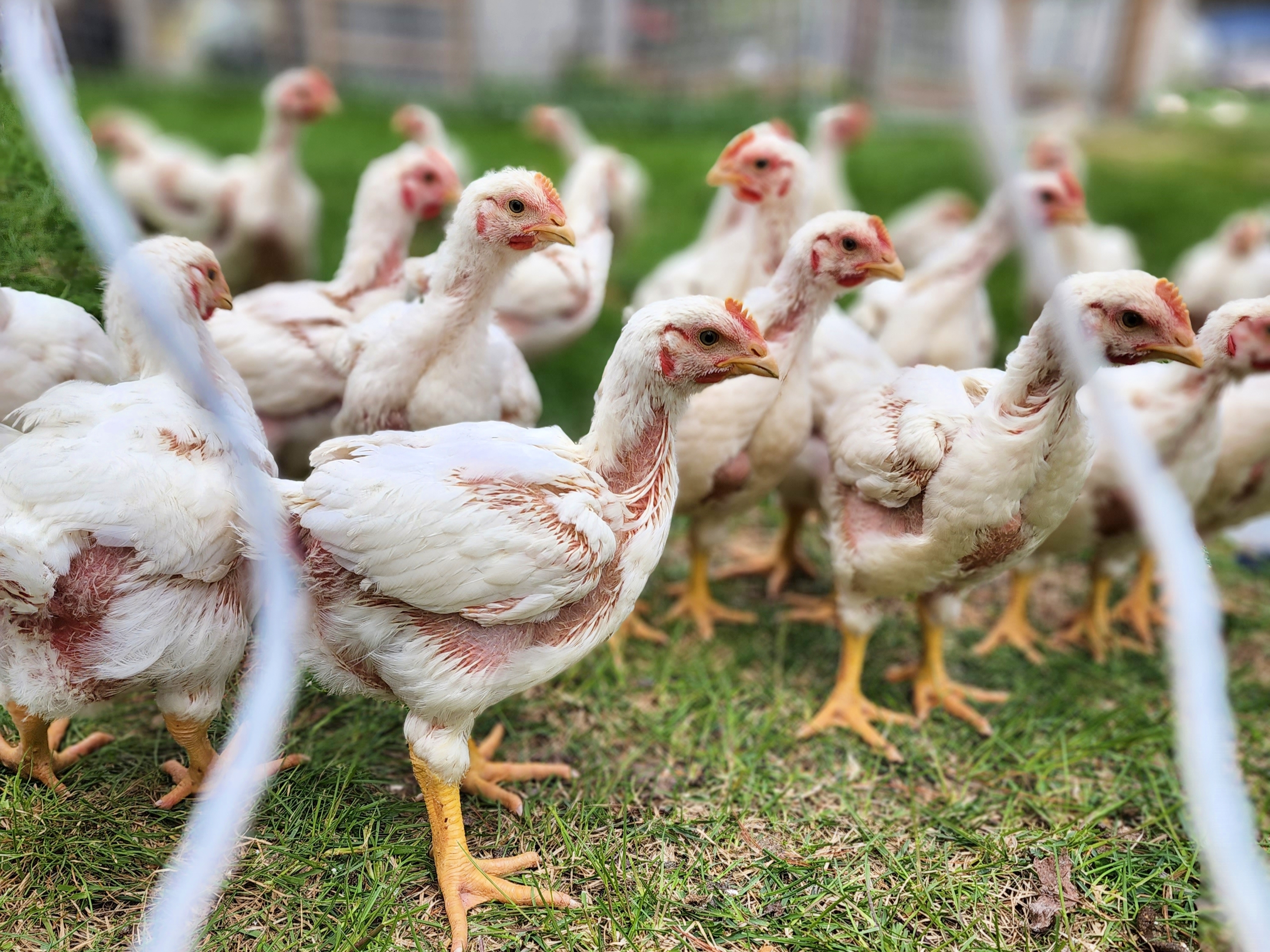
Your typical chicken breed reaches maturity at 20-24 weeks. Even after 6 months of growing, these laying breeds don’t usually have a great deal of meat on them. This varies by breed, of course, but in general they are on the smaller side. Their feed conversion is also low, meaning they take quite a bit of feed for a small amount of meat. Heavier breeds are sometimes known as “dual purpose” because they can become good egg layers or put on more weight for butchering.
People wanted a faster turn around and good feed conversion though, and from that the jumbo cornish cross breed was introduced. Cornish chickens and white rock chickens were bred for rapid growth and heavy meat production. These are used in industrial production but are also available at your local feed store.
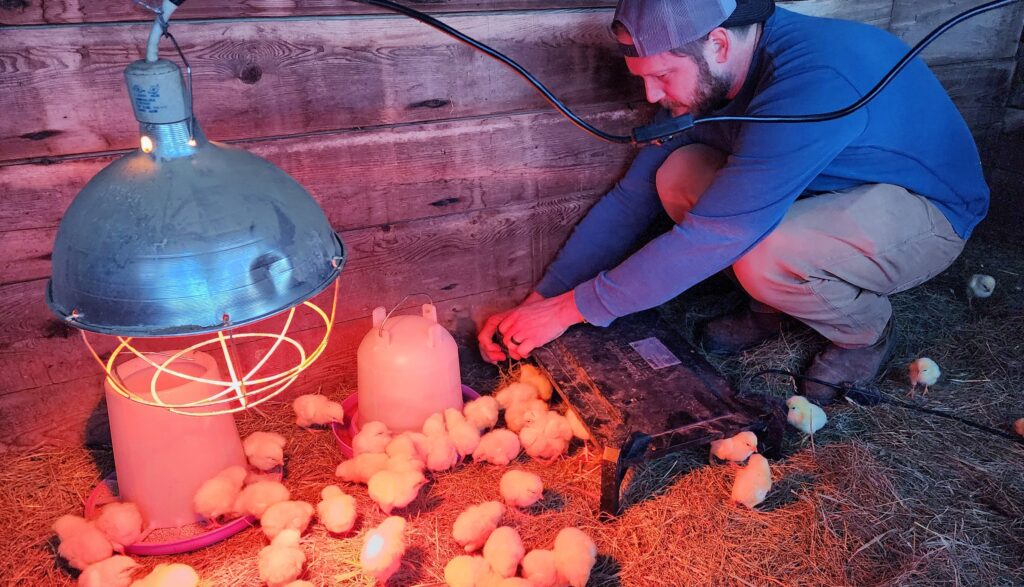
While a fast growing, cheaper alternative sounds great, there are definitely some drawbacks. These chickens grow so quickly they can have issues with broken legs, often gaining weight too fast for their legs. Beyond 8 weeks old they can start to have heart attacks or sudden death. They don’t like to forage. They will choose a feeder full of grain over free ranging. All of these factors lead to a very short life span. Since they are used for butchering, that isn’t a problem for most. However, it does make it nearly impossible to breed cornish cross back to eachother. With them being a hybrid of 2 breeds, you aren’t guaranteed to get the traits you want either, so cornish cross chicks need to come from a cornish and white rock breeding stock. This is a less sustainable option for the backyard chicken keepers.
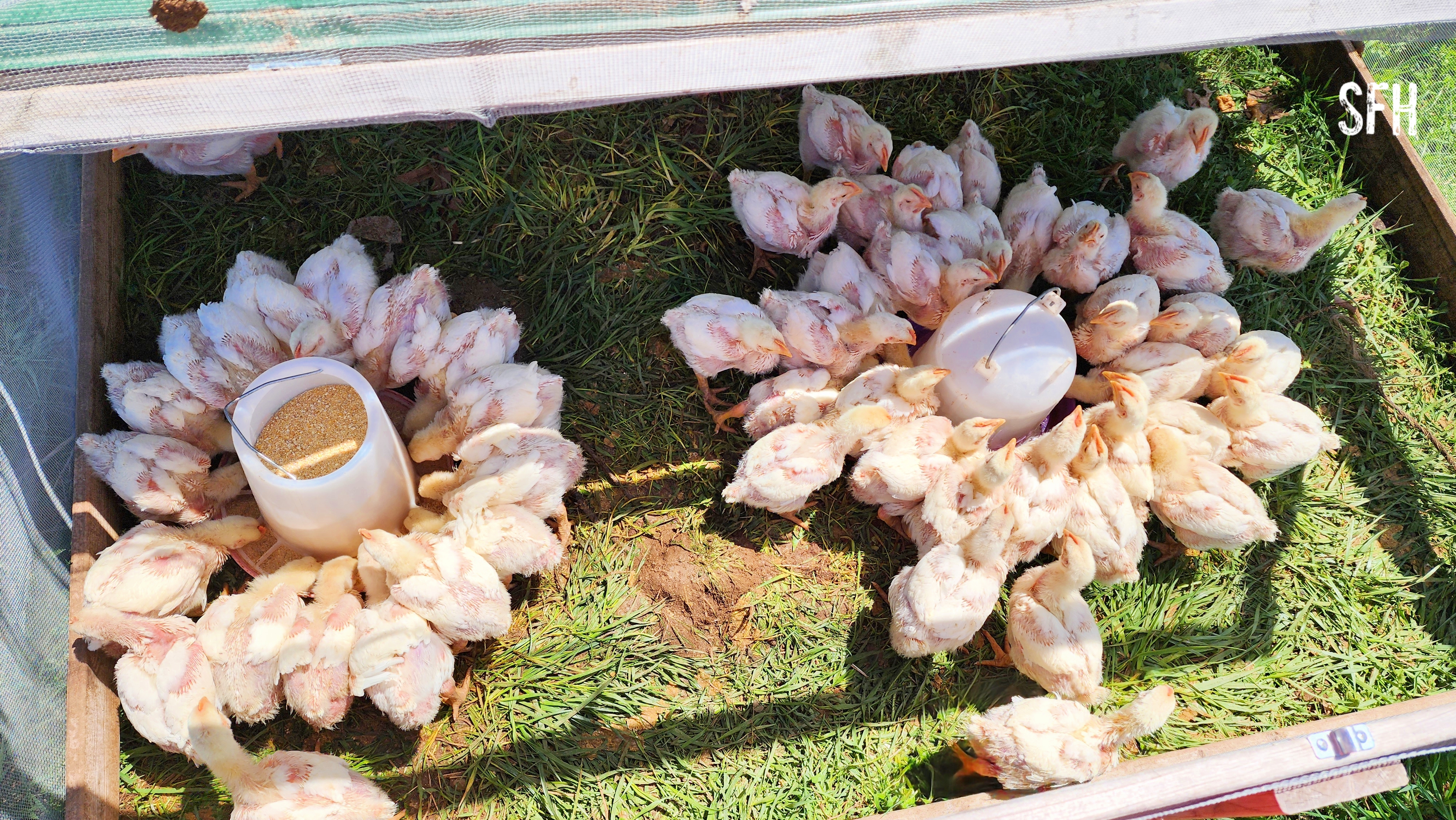
When growing your own cornish cross chickens, understanding their feed needs will help make a better product. For the first several weeks, meat bird starter with 20-22% protein should be used. Beginning week 3, feed should be restricted to 12 hours a day, letting the feed run out at night. A feed with 18% started can be used for the 2nd half of growth. If you choose to use a lower protein or encourage more free ranging, expect their growth to take a bit longer. Do not plan to keep them beyond 10-12 weeks though, as you will begin to rapidly lose birds to health issues.
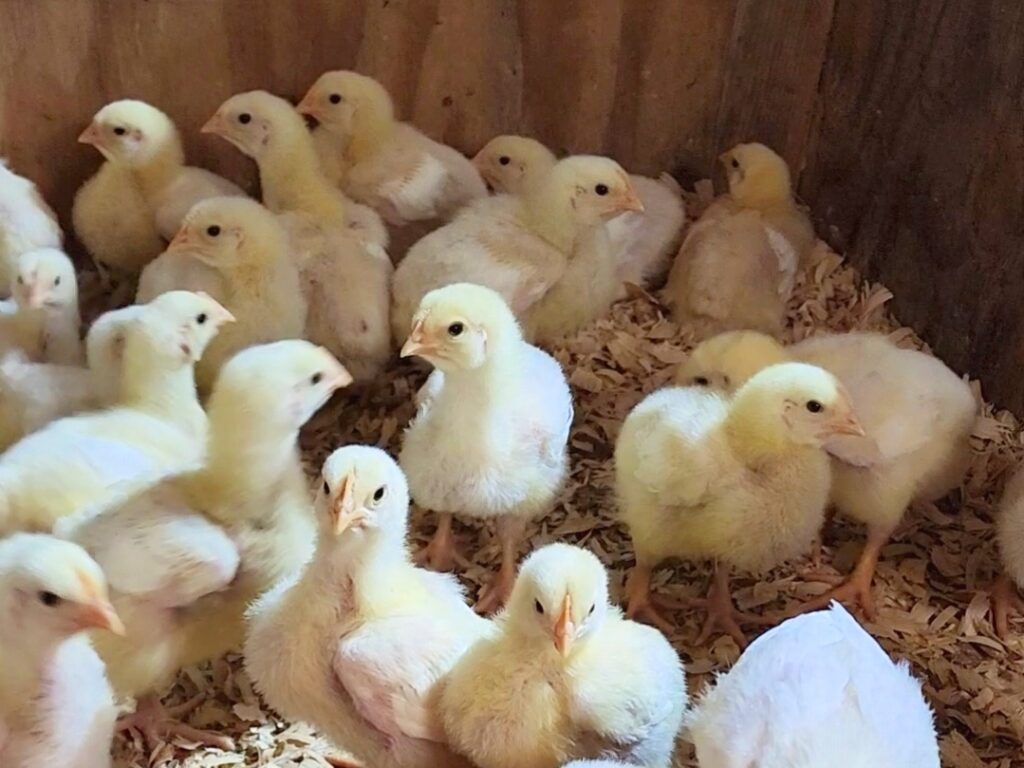
Determining how many chicks to start with can be as easy as deciding how often you will eat them. We started with 25, assuming we would eat one every other week. As our family has grown, we eat at least one a week, so we grow 50 at a time.
As with all chicks, you will need a warm brooder with a heat source, feed, and fresh water at all times. At 3-4 weeks the cornish cross will be ready to head out to a chicken tractor. They grow faster than their feather growth, so if they still look a bit pink or patchy at that point, that is due to their breed. At 7-8 weeks it is time to consider butchering.
We like to part out our cornish cross. With this method you can skin the birds rather than plucking. We butcher 6 at a time and make 3 packages of 4 breasts, 2 packages of 6 thighs, and 3 packages of 4 legs and 4 wings. The bones and feet get boiled down into broth and pressure canned. We also pressure can some of the breasts for quick meal options.
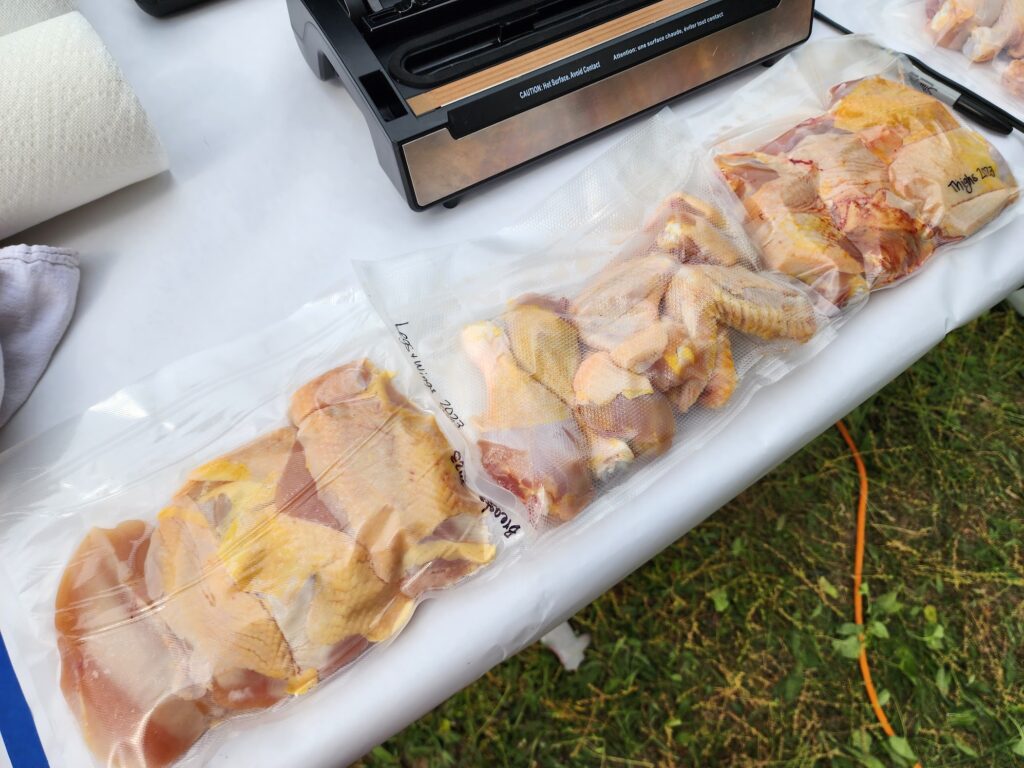
Each year we also keep about 20 whole birds in the freezer and use our chicken scalder and plucker. We’ve also done this the old fashioned way with hand plucking and if doing a small batch it is reasonable to do that rather than buy the more expensive equipment.
Packaging can be done with food saver type bags or shrink bags. This year we will be trying the shrink type for the first time on our whole birds. For parts we will still use the food saver type.
For more information about cornish cross meat birds and how we raise them, see our youtube videos below and be sure to subscribe!
